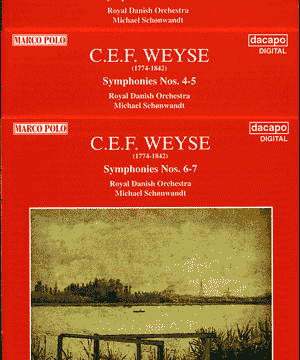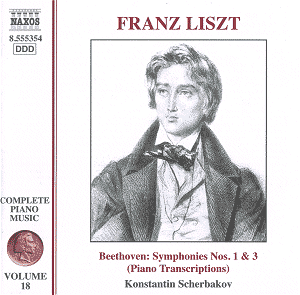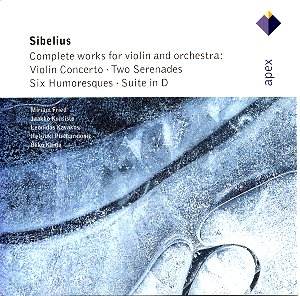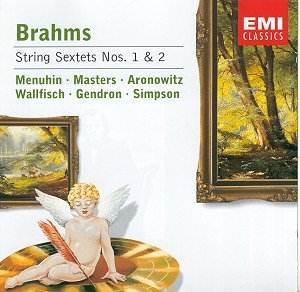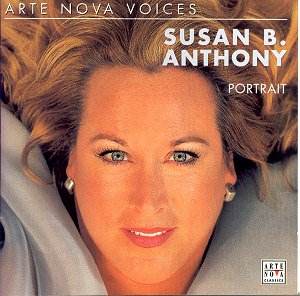 Composer: Susan B. Anthony
Composer: Susan B. Anthony
Works: Chausson: Le Roi Arthus – Ah, Trahie! Abandonnée; Menotti: The Consul – To this we’ve come; The Old Maid and the Thief – What a curse for a woman is a timid man; Wagner: Lohengrin – Einsam in trüben Tagen; Tannhäuser – Allmächt’ge Jungfrau; Strauss: Ariadne auf Naxos – Es gibt ein Reich; Elektra – Ich kann nicht sitzen; Die Frau ohne Schatten – Wehe, mein Mann!; Salome – Ah! Du wolltest mich nicht deinen Mund küssen lassen, Jochanaan
Performers: Susan B. Anthony (soprano), Slovak Radio Symphony Orchestra Bratislava/Ivan Anguélov
Recording: Slovak Radio Concert Hall, Bratislava, May 14–18, 2001 [DDD]
Label: Arte Nova Voices
The recording “Susan B. Anthony Portrait” offers a fascinating glimpse into the burgeoning talent of a soprano at a pivotal moment in her career. With a repertoire that traverses the late Romantic and early modern eras, this collection features significant excerpts that not only highlight Anthony’s vocal prowess but also situate her within a lineage of operatic interpretation that includes the likes of Wagner and Strauss. The selection of works is particularly astute, as it juxtaposes the lush lyricism of Chausson and Menotti with the more demanding landscapes of Wagner and Strauss, showcasing Anthony’s versatility as she navigates these varied musical worlds.
The performance itself is anchored by a commendable collaboration with the Slovak Radio Symphony Orchestra under the baton of Ivan Anguélov. Anthony’s interpretation of Chausson’s “Ah, Trahie! Abandonnée” from Le Roi Arthus emerges as a highlight, the lyrical lines flowing with an expressive ease that hints at the Wagnerian influence woven into the fabric of the piece. The orchestra supports her well, particularly in the fanfare passages around the ten-minute mark, which resonate with a grandiosity befitting the dramatic stakes of the work. Notably, Anthony and Anguélov resist the temptation to indulge in excessive Romanticism, allowing the music’s inherent beauty and emotional gravity to shine through.
Menotti’s excerpts, particularly from The Old Maid and the Thief, showcase Anthony’s ability to effortlessly convey character through vocal nuance. The ease with which she tackles the lyrical demands of Menotti’s writing serves as a reminder of the composer’s underappreciated contribution to the operatic canon. Yet, while these selections are engaging, they also indicate the rich terrain yet to be explored in Menotti’s oeuvre. The potential for further recordings of his works remains tantalizingly apparent, with Anthony’s interpretation providing a solid foundation for future exploration.
The true test of Anthony’s capabilities lies in her handling of Wagner and Strauss, where the stakes are considerably higher. Her rendition of “Einsam in trüben Tagen” from Lohengrin is convincing, though an occasional edge in her voice can distract from the overall flow. Particularly impressive is her control of legato in “Allmächt’ge Jungfrau,” which demonstrates not only her technical skill but also her understanding of the dramatic context. The Strauss excerpts present an even greater challenge, and while Anthony generally rises to the occasion, her lower register occasionally falters, momentarily disrupting the continuity of her performance. The extended “Ah! Du wolltest mich nicht deinen Mund küssen lassen, Jochanaan” from Salome allows her to stretch her interpretive muscles, though the chilling intensity demanded by this music sometimes eludes her.
The recording quality is satisfactory, capturing the nuances of Anthony’s voice and the orchestral accompaniment adequately, though the orchestra occasionally sounds somewhat business-like, lacking the fervor that characterizes the finest interpretations of these works. Comparatively, Astrid Varnay’s definitive performance of Salome from 1953 remains a benchmark, showcasing the potential that Anthony strives for yet has yet to fully achieve.
This collection ultimately affirms Susan B. Anthony as a soprano of considerable promise, still on the journey toward mastering the operatic repertory. While there are moments of remarkable artistry, particularly in the Chausson and Menotti selections, the challenges presented by Wagner and Strauss reveal areas for growth. Anthony’s voice possesses a distinctive quality that invites listeners to anticipate her evolution as an artist. With continued exploration of her craft, she has the potential to emerge as a significant figure in the modern operatic landscape.
